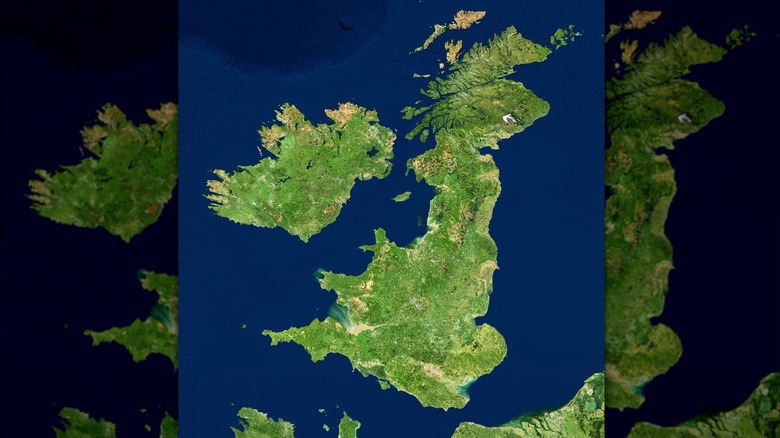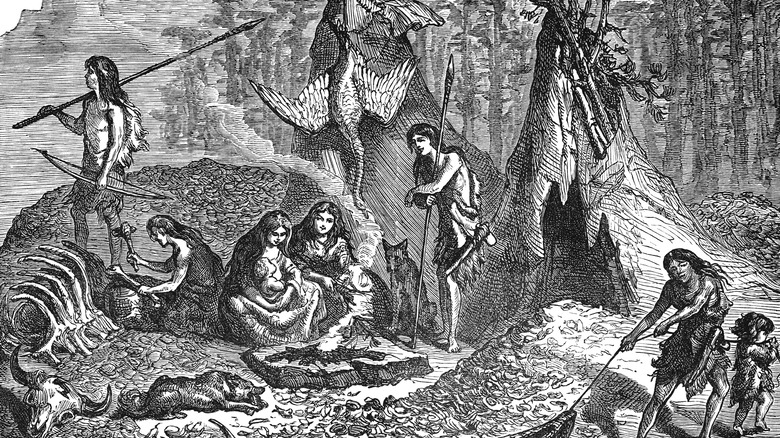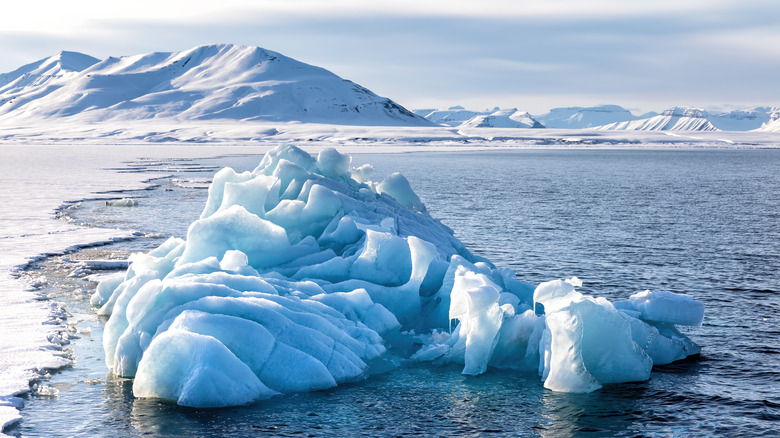The Unknown Natural Disaster That Wiped Out Part Of Ancient Britain
In prehistoric Doggerland, a hilly, densely wooded area that once connected today's British Isles and Europe, the Mesolithic ancestors of the modern-day Britons faced a problem that humans have to reckon with now: rising sea levels. In fact, the floods that wrecked their homeland were the result of melting glaciers, a situation that recalls present-day problems. And according to The Vintage News, the residents of Doggerland were eventually left with no choice but to pick up and move.
They set up their new homes in what are today England and the Netherlands. But the remains of Doggerland's civilization still make their way into fishermen's nets now, from artifacts to bones, per The Vintage News.
Those floods 6,000 years ago offer lessons for our age. According to National Geographic, some scientists warn that our melting polar ice caps could force billions of residents of areas near shorelines to migrate. And on an already overcrowded planet, that is a recipe for social strife.
What happened to suddenly flood Doggerland?
It is thought that amid the changing water levels, an epic tsunami struck Doggerland, according to The Guardian. The natural disaster was probably the result of a sub-sea landslide near Norway's coast.
Scientists have dubbed that landslide the Storegga Event, per Ancient Origins. And it likely caused multiple huge waves to overtake about 2,700 square miles of land in Doggerland.
How do we know that? Scientists at the University of Warwick have been plumbing the ancient DNA in sediment deposits from the North Sea for years. And in 2020, they released a study in the journal Geosciences finding that lithostratigraphy (the study of rock layers), geochemical signatures, macro and microfossils and sedimentary ancient DNA (sedaDNA) all point to a tsunami as the natural disaster that struck Doggerland, killing or driving out its inhabitants. While some Doggerlanders were able to make the journey to drier ground, many of the survivors lost their tools and shelter and probably died during the following winter.
Gathering what we know to tell a cautionary tale
Over the years, archaeologists and paleontologists from England and the Netherlands have pored over artifacts, seismic survey data, and even perfectly-preserved footprints on the seafloor to gain a better understanding of Doggerland culture. And they have actually put together a digital model representing 18,000 square miles of Doggerland before natural disaster struck, per National Geographic.
They have also assembled a physical exhibition that went on display in Holland's National Museum of Antiquities last year, and that features 200-plus artifacts — everything from skull fragments to arrowheads to mammoth molars, as The Guardian reported at the time. Some of the artifacts came from "citizen archaeologists" who picked the fossils up off the beaches near their homes.
Scientists hope that tales of Doggerland will spur more people to take climate change and the resulting uptick in extreme weather events seriously. Unlike the conditions that struck Doggerland, our present rising sea levels are a man-made catastrophe, and one we can at least try to reverse. Whether future humans will suffer the same fate as the residents of Doggerland remains to be seen.


